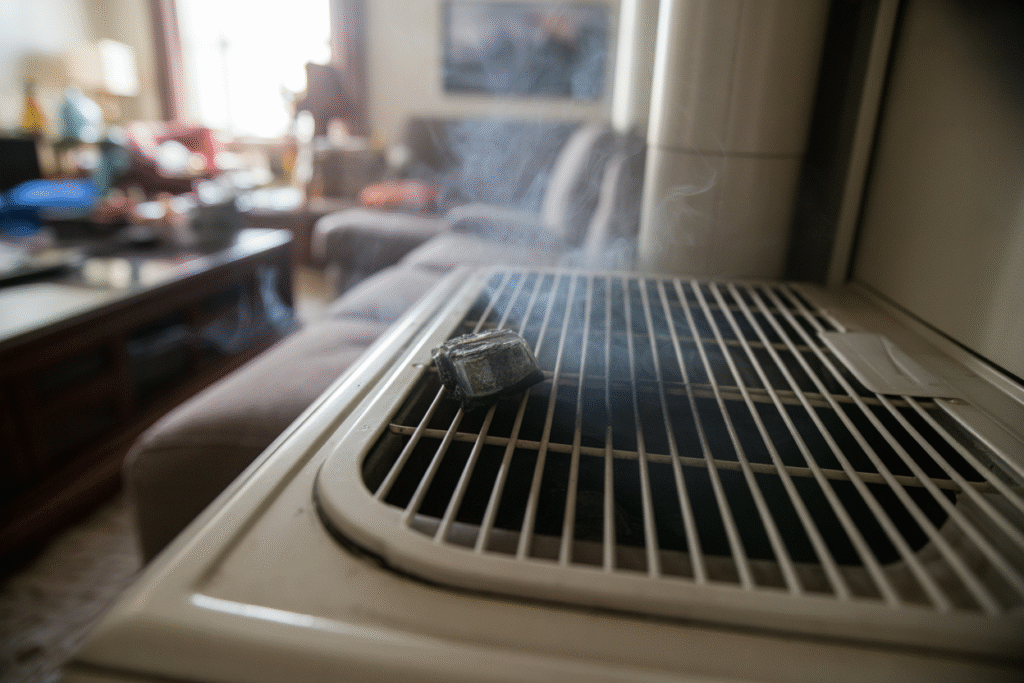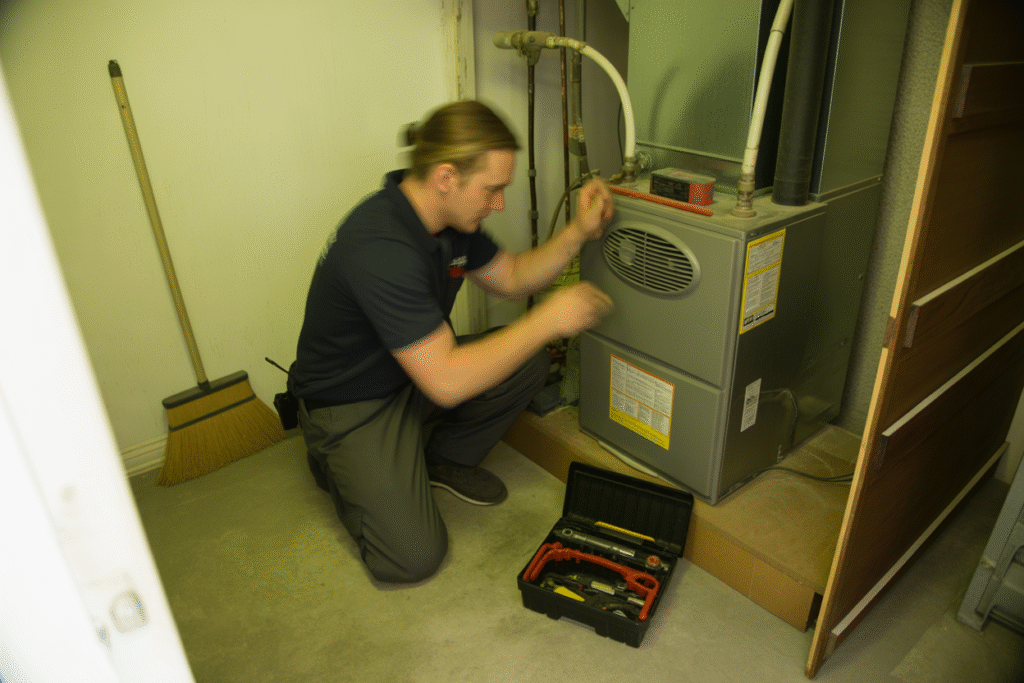Why Does My Heater Smell Like Burning Plastic? A Richmond TX Homeowner’s Guide
You flip the thermostat to heat for the first time this season, and within minutes, your home fills with a strange burning plastic smell. Your stomach drops a little. Is something wrong? Is it dangerous? Should you turn everything off and call someone right now? If you’re a homeowner in Richmond, this scenario probably feels familiar. We don’t use our heaters constantly like folks up north do. Our systems sit quiet through long stretches of mild weather, then suddenly kick on when temperatures drop into the 30s or 40s overnight. That first startup often brings surprises, and a burning smell ranks high on the list of things that make people nervous. Here’s the truth: some burning smells are completely normal and harmless. Others signal real problems that need immediate attention. The challenge is knowing which is which, especially when you’re standing in your living room trying to decide if you should be worried or not. At Temper Mechanical Air & Heat, we’ve responded to countless calls from families throughout Richmond, Pecan Grove, Greatwood, and Rosenberg who smelled something burning and didn’t know what to do. We’ve seen everything from harmless dust burning off to serious electrical issues that needed immediate repair. This guide walks you through the most common reasons your heater smells like burning plastic, helps you understand when it’s safe to wait and watch, and gives you clear steps for what to do right now. Let’s start by talking about what’s actually happening inside your heating system when that smell appears. The Most Common Reasons Your Heater Smells Like Burning Plastic When you notice a burning smell from heater vents, several different issues could be causing it. Understanding each possibility helps you assess your specific situation and make smart decisions about what comes next. Dust Burning Off Components This is the most common explanation, and fortunately, it’s also the most harmless. During the months your heater sits unused, dust settles on every surface inside your system. It coats the heat exchanger, accumulates on the blower motor housing, and layers across electrical components. When you finally turn on your heat, these components get hot, and the dust burns off. The smell this creates often resembles burning plastic, though some people describe it as musty or slightly acrid. It typically appears within the first few minutes of operation and gradually fades as the dust burns away. If your system has been off for six or seven months, you might notice this smell for 20 to 30 minutes before it completely disappears. Richmond homes experience this more than places with consistent heating use. We might go from October through January with barely any heat, then suddenly hit a cold snap where the system runs continuously for days. That long dormant period gives dust plenty of time to accumulate, making the initial burning smell stronger when you finally need heat. If the smell is mild, fades quickly, and doesn’t return after the first hour or so of operation, dust is probably the culprit. Keep an eye on it, but you likely don’t need immediate professional help. Plastic Debris Inside Vents or Near Returns Sometimes the burning smell comes from actual plastic melting, but not from your HVAC system itself. Kids drop toys into floor vents. Shopping bags get sucked against return grills. Plastic storage bins sit too close to supply registers. When your heater starts blowing hot air, these items heat up and produce that distinctive burning plastic smell. We’ve pulled some surprising things out of ductwork over the years. Action figures, small plastic cars, pieces of packaging material, and once, an entire roll of plastic wrap that somehow made its way into a return vent. The smell these items create is usually stronger than burning dust and doesn’t fade as quickly since the plastic keeps melting as long as hot air flows. Walk around your home and check every floor register and return grill. Look for anything plastic nearby or anything that might have fallen into vents. If you find something, carefully remove it if you can reach it safely. If it’s deep in the ductwork, you’ll need professional help to retrieve it before it causes more problems or creates a fire hazard. This explanation makes particular sense in homes with young children or in rooms where you store seasonal items. Greatwood and New Territory homes with finished game rooms or playrooms in second stories often have this issue because kids play near floor vents without adults noticing. Overheated Blower Motor Your blower motor is the hardworking component that pushes heated air through your ductwork and into your home. These motors run on bearings that need occasional lubrication, and they have electrical components that can overheat under certain conditions. When a blower motor struggles, whether from worn bearings, excessive dust buildup, or electrical stress, it generates heat beyond normal operating temperatures. As the motor housing and nearby components overheat, they can produce a burning plastic smell. The motor casing itself is often made from heat-resistant plastic or has plastic insulation on wiring, and when things get too hot, these materials start to smell before they actually melt or fail. The heater smells like plastic from an overheating blower motor usually accompanies other symptoms. You might hear unusual noises like squealing, grinding, or humming louder than normal operation. Airflow might seem weaker than usual. The smell typically intensifies the longer the system runs and doesn’t fade like dust burning off would. Blower motors overheat for several reasons. Clogged filters restrict airflow, forcing the motor to work harder. Lack of lubrication causes friction that generates excess heat. Electrical issues like failing capacitors make the motor struggle to start and run. Whatever the specific cause, an overheating blower motor needs professional attention before it fails completely or creates a genuine fire hazard. This problem appears more frequently in Richmond’s older neighborhoods where homes still have original HVAC equipment from the 1990s or early 2000s. Those motors have logged thousands of hours and might

